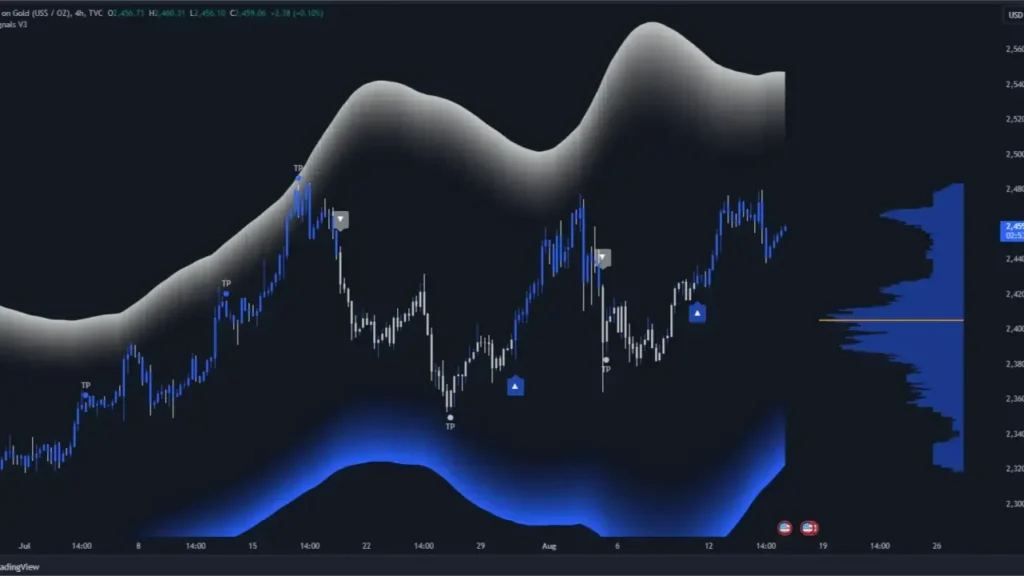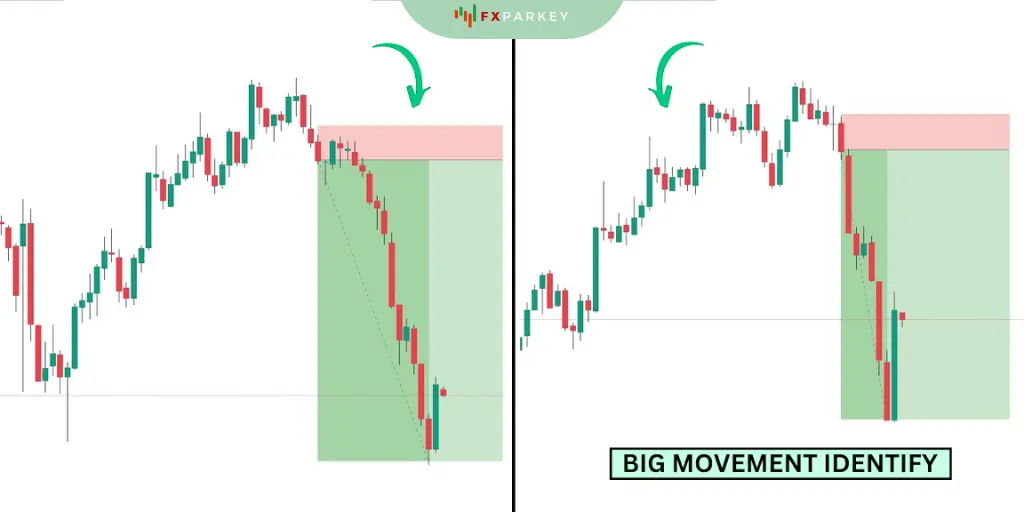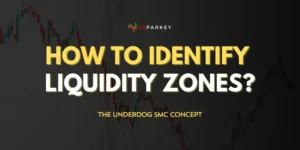Stop loss hunting can feel like a sneaky addition to your trading challenges, especially when you’re focused on predicting market moves and safeguarding your capital.
You might have wondered why your trades sometimes get knocked out mere moments before prices swing in your favor. That frustrating setup is exactly what stop loss hunting aims to achieve.
In this ultimate guide, we’ll unpack how the strategy works, why it’s used by smart money or institutional players, and how you can protect yourself while still aiming for strong gains.
What is Stop Loss Hunting?
Stop loss hunting is a market tactic where big players, like hedge funds or institutional investors, push prices to levels that trigger a bunch of traders’ stop-loss orders. Once this wave of orders is activated, it can spark market volatility and lead to quick price moves that benefit those who orchestrated the hunt.
If you’re a day trader, you know how critical it is to manage risk and protect your positions. Learning how stop loss hunting works is your first step toward leveling the playing field.
Who Uses SL Hunting?
Think of huge banks, influential investment firms, or well-funded professional traders. They have the capital, technology, and market access to move prices in ways you and I can’t. By nudging a stock or currency toward certain price points, they force retail traders’ positions to close, often at a loss. Afterward, they can buy or sell at more favorable prices.
Why SL Hunting Matter?
Whenever your stop-loss orders are triggered prematurely, you’re missing out on potential profit or ending up with bigger losses than necessary. And if you rely on key price zones or technical indicators, you may find that these are the very areas targeted by well-capitalized players. Understanding stop loss hunting helps you adjust your strategies to avoid setting obvious targets.
Recognize Common Triggers
Stop hunters look for high-traffic price points. These are typically market areas where lots of traders set stop losses, especially around classic support and resistance levels.

The goal is to create a chain reaction of orders, scooping up shares or currency at a discount while other traders are forced out.
Support and Resistance Highs
Support levels are prices where a downward trend is expected to pause due to concentrated demand. Conversely, resistance levels are where an upward trend is predicted to stall out because of strong selling interest. Unfortunately, both these zones can act like neon signs for large traders looking to trigger your stop losses.
Stop Placements that Stand Out
If you’re using obvious price clusters such as round numbers (e.g., 100, 50, or 10) or the exact support/resistance lines you see on a popular chart, it’s likely many other traders are doing the same. This clustering makes it easier for institutional order flow to target these points, trigger your stops, and move the market in their desired direction.
Apply Ethical Considerations

Stop loss hunting is not automatically illegal. However, when it involves deliberate manipulation or privileged information, it can cross legal and ethical lines. Most regulators forbid deceptive trades intended to produce artificial price movements, so always confirm that your own practices align with standards in your region.
Difference Between Legal and Illegal
For you, the key is recognizing that not all big moves near support or resistance lines are suspicious. Sometimes it’s simply a large trade fueling momentum, not a deliberate attempt to hunt stops.
Manage your Risk
The good news is you have plenty of ways to shield your trades from predatory maneuvers. It starts with reevaluating how you place your stops. Instead of using a rigid formula that every textbook or online forum suggests, consider how fluid and unpredictable markets can be. Blending a bit of flexibility into your strategy goes a long way.
Widen or Shift your Levels
Rather than using the exact support line or a perfect round number, you can:
Wider stops aren’t foolproof though. You’re trading off extra breathing room for potentially larger losses if the market turns sharply.
Protect with Your Approach
You might also experiment with trailing stops or time-based exits. With a trailing stop, your stop-loss adjusts as the price moves in your favor, locking in profits while still offering room for growth. Meanwhile, time-based exits let you decide to close positions if they haven’t reached a target within a certain period, preventing you from leaving trades open overnight in choppy markets.
Develop Advanced Defenses

If you’re comfortable with more nuanced tactics, mental stops and hidden stop-loss features can help you stay under the radar of potential stop hunters. These methods demand discipline and practice, but they might be well worth the effort.
Use Mental Stops
A mental stop is exactly what it sounds like. You tell yourself you’ll exit if the price crosses a certain threshold, but you don’t physically place the order in the market. Because it’s invisible, you’re less likely to be targeted by institutional order flow.
Hidden Stop Orders
Certain brokers provide hidden stop-loss features. These orders don’t appear in the public order book, so other traders can’t see them. By using a hidden stop, you increase the odds that your positions won’t be targeted by big players looking to run stops at obvious zones.
Capitalize on Volatility
It’s not all about defense. Sometimes you can benefit from the very moves that take out other people’s stops. If prices briefly dip on a stop run, you may catch a quick entry at a bargain, anticipate a reversal, and then ride the upswing. Of course, timing is everything, so consider practicing on a demo account or paper trading until you gain confidence.
Understand Short Timeframe
Intraday or very short-term trading windows often see higher volatility and more dramatic price swings that can trigger your stop faster. That can be an advantage if you know how to navigate rapid moves. Quick drops and spikes are excellent for short-term scalps, but they also demand you stay glued to the screen with a clear exit strategy.
Embrace the Momentum
When the price moves strongly in one direction because a cluster of stop-loss orders got hit, the trend might rapidly continue. If you can identify that wave, you could join in for a short burst. Just be ready to exit if the momentum fizzles out as suddenly as it started.
Time your Trades
Liquidity and volume can make a big difference in how easily large players can nudge prices. During active trading sessions with high participation, it’s usually tougher (though not impossible) to move prices dramatically. By choosing your entry times wisely, you might avoid the most vulnerable moments for stop hunts.
Watch the Market Hours
If you’re involved with forex, you might see spikes in liquidity when London and New York sessions overlap. However, in stock trading, the first and last hours of the session often have heightened volume. Understanding these windows lets you decide whether you prefer the busier times, with more competition and less privileged price manipulation, or quieter hours, where big players can more easily exploit price moves.
Overlaps and News
Major economic news releases or earning statements increase market volatility. While this can lead to abrupt swings and potential stop hunts, you can also ride the wave if you predict the news correctly. Always factor in upcoming announcements when placing your stops. A well-timed entry set outside the obvious zones might help you dodge a stop hunt triggered by a surprise headline.
Final Takeaways
Stop loss hunting is not just a myth or a story shared in trading forums. It’s a real tactic used by institutional players to exploit predictable price levels where retail traders place their exits. That doesn’t mean you have to fall for it. With careful placement of wider stops, the use of mental and hidden orders, and better timing around high-liquidity periods, you can significantly reduce your chances of getting hunted.
Here are a few things to remember:
Yes, stop loss hunting can disrupt your trades and morale. But once you understand the basics of institutional order flow and incorporate these risk-reducing tactics, you’ll be far more resilient. Don’t be afraid to adapt. By turning the tables on this common manipulation, you can stay calm when prices suddenly spike or drop, and seize opportunities instead of watching them slip away. Good luck out there, and trade smart!






